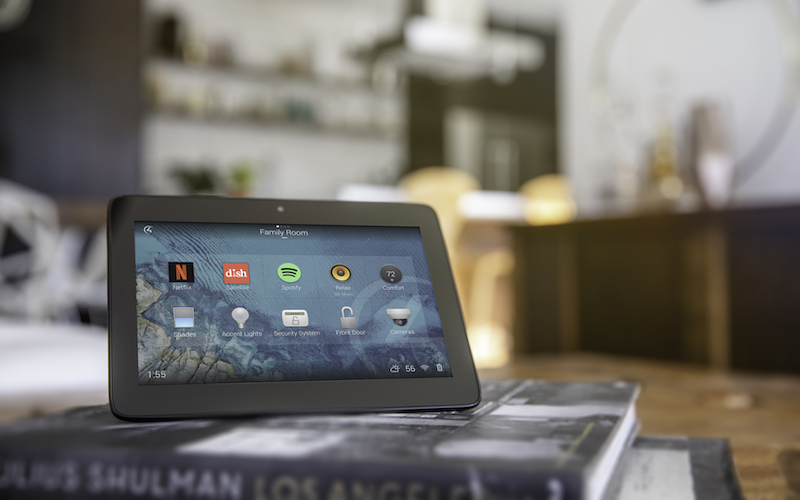Smart homes are witnessing a rise in long-range, low-power technology to ensure devices stay connected inside and outside the home.
Smart home technology continues to infiltrate the home at an astounding rate. According to Statista Research, the total market size for smart home products and technology is predicted to reach $53 billion by 2022. From home automation to smart kitchen appliances, voice assistant-enabled lighting and everything in between, consumer electronics companies are leveraging the Internet of Things (IoT) to connect everyday devices to the cloud, creating new experiences for consumers.
Related: Smart Home Design – Where to Start and How to Do It Well
The global pandemic has added to this growing trend. A December research report from Parks Associates found that “…one-third of smart device owners in U.S. broadband households have increased usage of their devices during the COVID-19 pandemic, including 46 percent of smart door lock owners.”
Similarly, a recent survey from Xiaomi found that since March 2020, more than half of consumer respondents purchased at least one smart device. In fact, the survey found that “…on average, consumers bought two new smart devices since March in response to being home more during the pandemic.” With Business Insider forecasting that more than one billion smart home devices will be deployed by 2023, it’s clear that we’ll continue trending up.
Connectivity Options for Smart Homes
In addition to offering a plethora of device options, the market also offers several different choices when it comes to connectivity solutions. Short-range connectivity protocols, such as Wi-Fi, enable many connected devices in the smart home space while the promise of 5G and its impact on the smart home looms closer every day. Device manufacturers, however, are increasingly turning to IoT platforms that offer both indoor and outdoor connectivity in one.
Increasingly, our environments are blending from indoors to outdoors, particularly as we’re confined to the home during the pandemic, and the challenge is providing seamless connectivity from one spot to the next. Battery-powered, long range and low power IoT solutions are emerging as a technology of choice to do this.
As many applications extend to the periphery of the home or into the yard, these solutions offer the capability to connect devices to the same platform as those indoors, where the range of legacy systems falls short.
So, what types of applications are connected in the home? Let’s explore some examples of emerging use cases where consumers are taking advantage of long range, low power connectivity technology.
Water Leak Detection
Imagine a pipe leaking in an area of the house you don’t regularly go into. Maybe the leak is front and center in your kitchen, but you happen to be out running errands. Maybe it’s outside in your garden where your sprinkler system is set up. In any of these cases, time is not on the owner’s side.
Damage caused by water leaks is a significant threat for homeowners and renters, as well as the insurance companies they work with. In addition to costly structural damage, the harmful effects of mold can begin to show within 24 hours of a moisture leak.
IoT technology and advanced connectivity can be leveraged to predict and prevent leaks in the home, no matter where they happen. Wireless, battery-powered humidity and temperature sensors can be installed in areas of the home with a high risk of water leakage.
Those sensors will gather information and share data in real-time over a public or private network to the homeowner and whoever they choose to have access to the information. Should a leak occur, real-time alerts notify the residents, allowing swift action to prevent serious damage to property.
Smart Gardening
The pandemic negatively impacted many industries, but one that saw growth was gardening. Breck’s, the largest U.S. importer of Dutch flower bulbs, recently analyzed the monthly sales revenue of 35 different retail sectors using the U.S. Census Monthly Retail Trade Report, comparing sales revenue from March through May 2019 against March through May 2020. According to its findings, “The building material and garden retail sector actually increased by 8.6 percent between Spring 2019 and Spring 2020.”
With a renewed interest in gardening, more and more homeowners are turning to smart homes technology to help their plants grow strong. Smart garden technology can be used to collect valuable information, like plants’ vitals and their growing environment, to help encourage positive growth.
Plant sensors can measure metrics, including soil moisture and fertilization, and compare that information against a plant database to provide specific notifications on how to optimize irrigation for each specific plant. Home gardeners can take it a step further with more advanced sensors to measure light, humidity and temperature to further improve growth.
Senior Care in the Home
Whether it’s happening in a home or a senior care facility, monitoring the location and status of seniors has traditionally been a manual task, relying on the vigilance of caretakers or family members to keep individuals safe and comfortable. The IoT is making this a lot more seamless and safe for those involved. One example is the use of noninvasive connected wristband trackers to locate and actively monitor individuals living with dementia.
Unfortunately, patients living with this disease often wander away from the home and can be injured in the process. A connected IoT system can enable caretakers to quickly create custom virtual boundaries via a geofence, allowing tracking applications to send alert notifications when the user has left the pre-determined area.
The device can provide real-time monitoring for the wearer both inside and outside of the residence, increasing the safety and independence of seniors, and providing caregivers and family members peace of mind.








